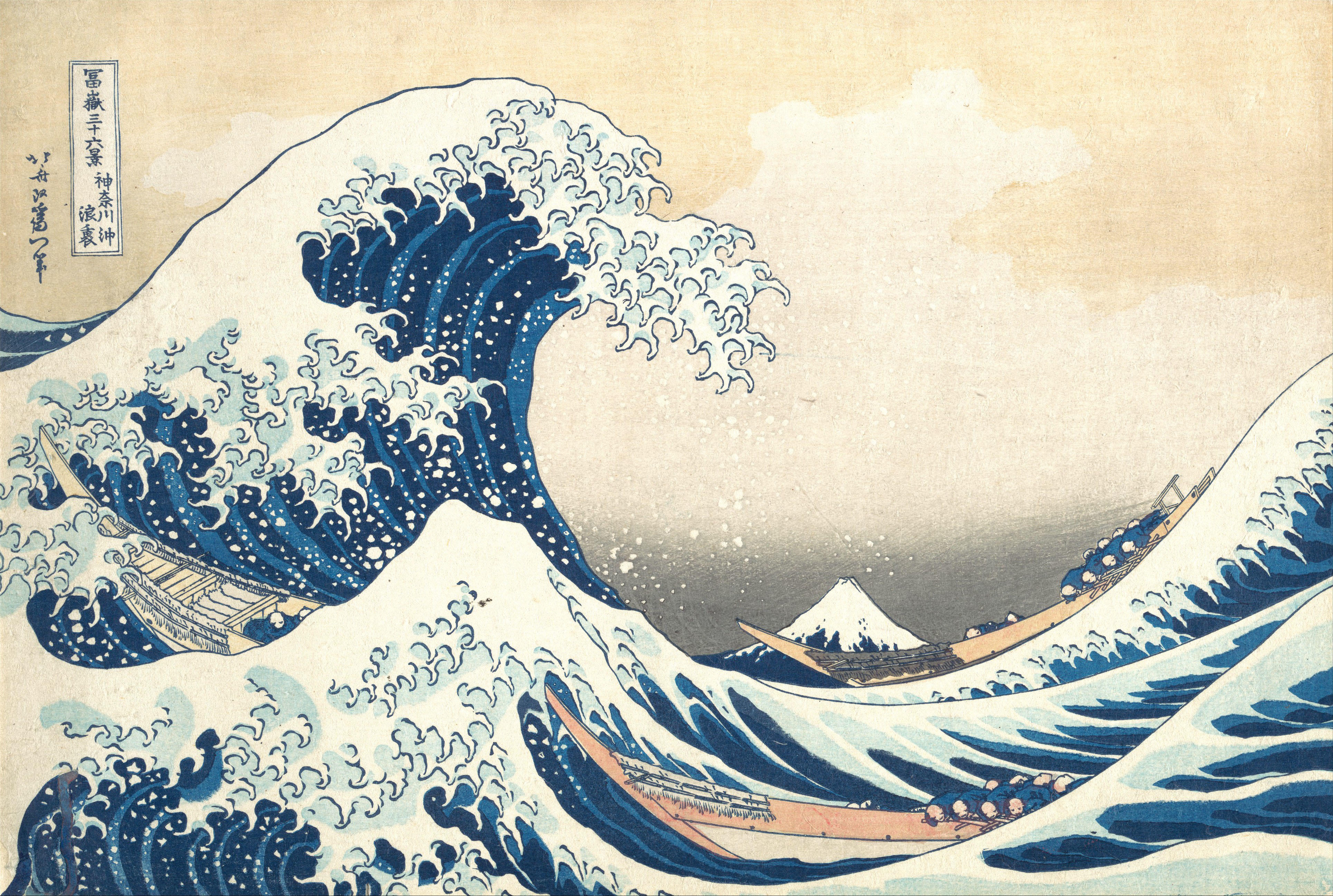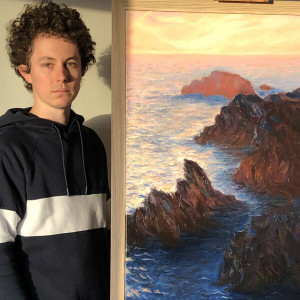The Mona Lisa is visited by almost 20,000 people every day. It's by far the most famous painting in the Louvre, but plenty of other great artists have works there that you can also see.
Beyond the artists in the Louvre, there are also greats like Degas, Renoir, Kahlo, Kandinsky, Rembrandt, Vermeer, Courbet, Seurat, Klimt, Pissarro, Mondrian, Caravaggio, Warhol, Caillebotte, Pollock, Goya, etc.
We won't be able to get through them all in just a single article, but if you're looking for great art, here are some of the world's most famous paintings!

The Mona Lisa - Leonardo da Vinci
The Mona Lisa is arguably the most famous painting in the world. The oil painting is famously housed in the Louvre and was painted by Leonardo da Vinci in the 16th century.
The lady in the painting is Lisa Gherardini, Francesco del Giocondola's wife.
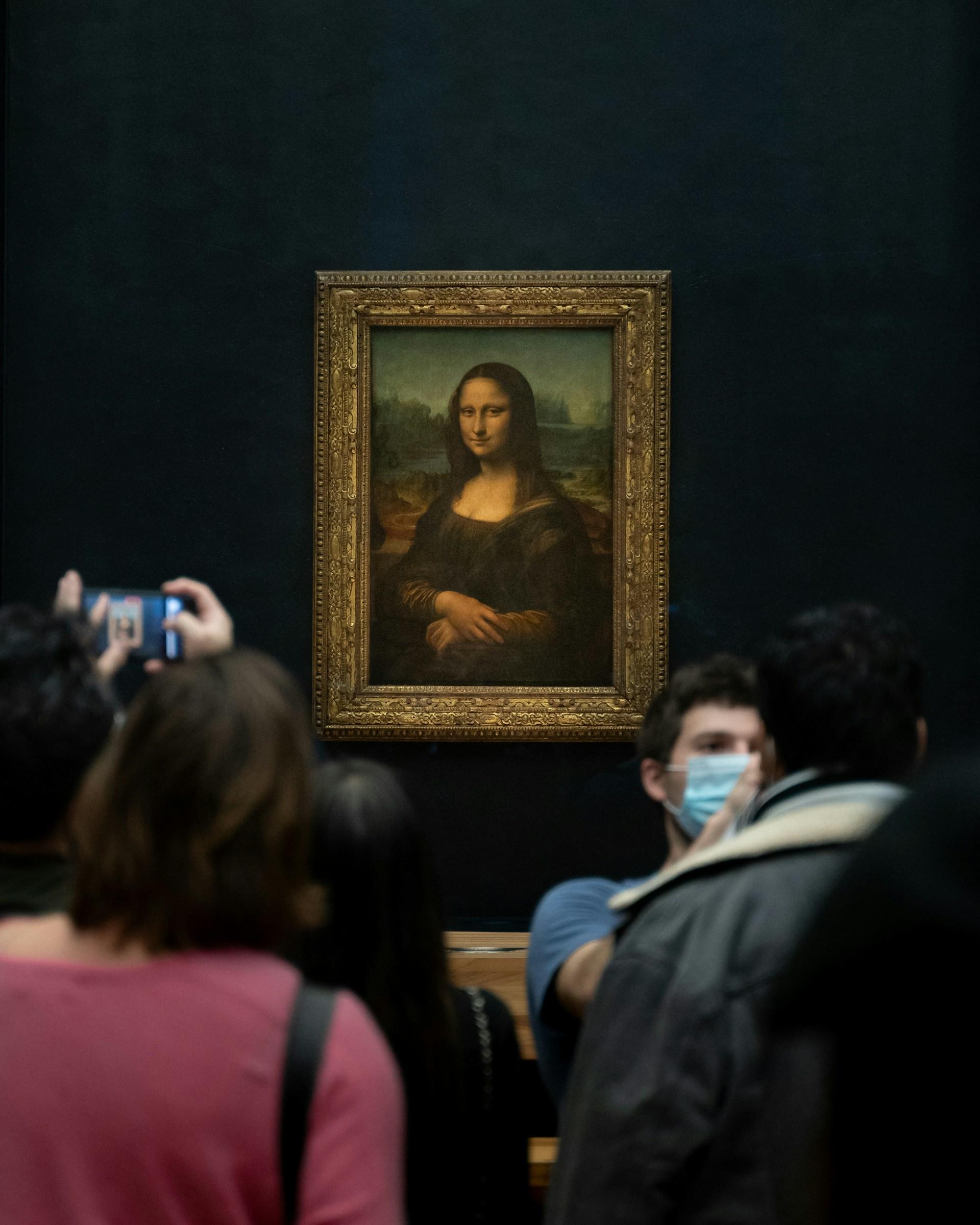
Leonardo da Vinci is probably the most famous Italian painter in the world, but his original oil painting is currently housed in Paris, France.
So how did an Italian painter's most famous work, which was painted in Florence, Italy, end up in France?
The story goes that Leonardo da Vinci was contacted by King Francis I of France and moved to the Château du Clos Lucé, one of the monarch's private residences. The Mona Lisa painting was on display in Versailles before being put in the Louvre Art Museum in Paris.
The portrait of Lisa Gherardini was famously stolen in 1911 by an Italian who wanted to return to painting in Italy.
This is thought to have made the painting even more famous, making the Louvre even less likely to want to return it to its homeland.
Guernica - Pablo Picasso
The Spanish painter Pablo Picasso spent much of his career living and working in France, but his most famous work isn't in Paris like the Mona Lisa. Instead, Guernica, a painting that's 3.5m by 7.8m in size, sits proudly in the Reina Sofia art museum in Madrid, Spain.
The painting depicts Nazi and Italian planes bombing the town of Guernica in Spain and the resulting chaos and turmoil in 1937 during the Spanish Civil War. The size of the painting is to further emphasise the devastation of the event that claimed 2,000 lives.
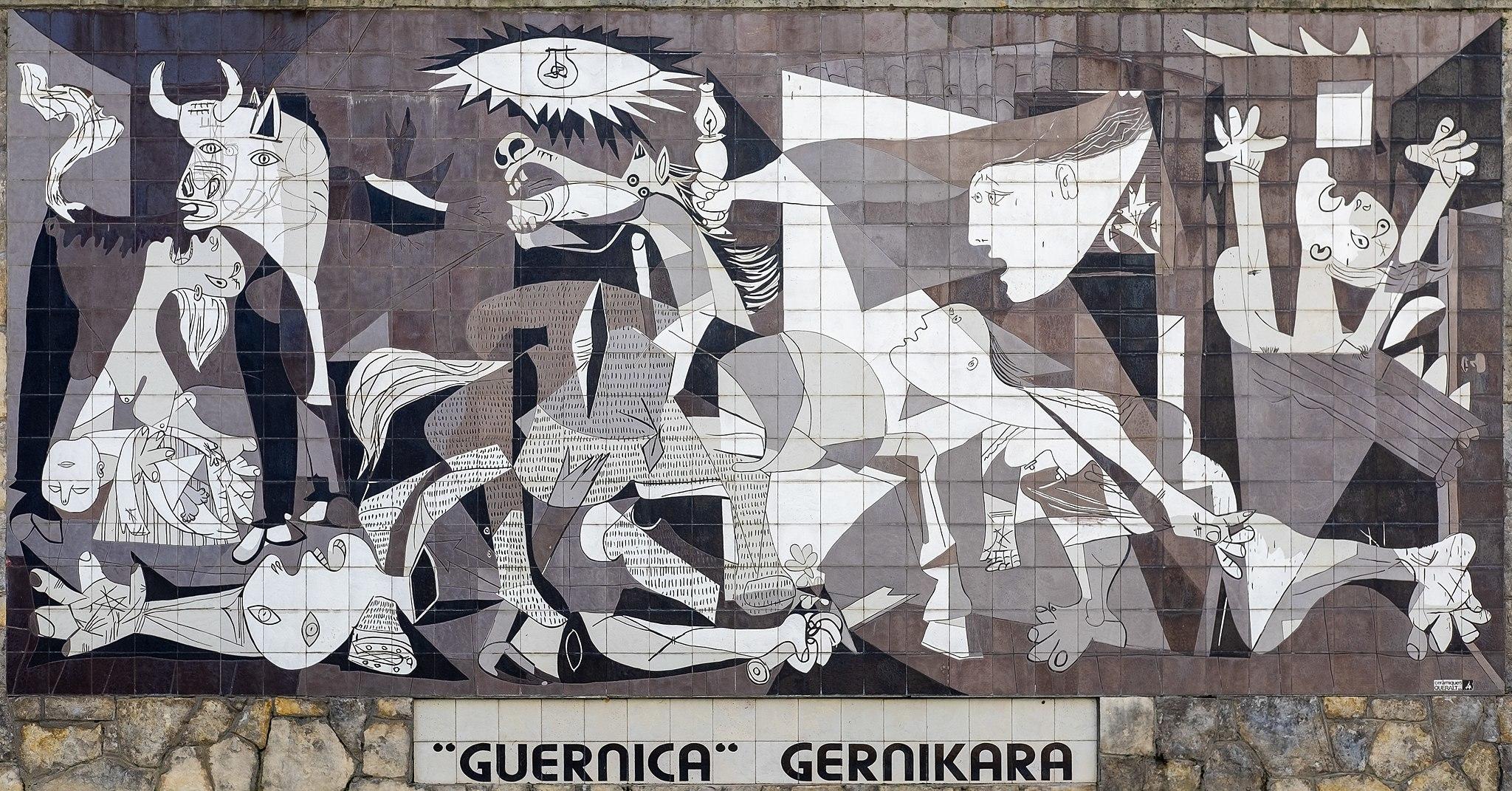
For a long time, the painting was kept in the Museum of Modern Art (MoMA) in New York City at Picasso's request. After all, the painting critically depicted a historical event perpetrated by the side of the dictator ruling Spain at the time: Franco.
Once Franco had died, the painting was returned to Spain, where it serves as a reminder of the country's history.
Liberty Leading the People - Eugène Delacroix
Another of the Louvre art museum's most famous pieces, Liberty Leading the People is an oil painting by the Romantic French artist Eugène Delacroix.
It was painted in the year 1830 and displayed in the prestigious Salon de Paris art exhibition the following year.

In this painting, Liberty is represented as a woman wearing the revolutionary Phrygian cap and bearing a French flag. Her pose is reminiscent of classical statues and the work is now seen as a representation of the French Republic and the sacrifices that were required to achieve it.
Since 1874, Liberty Leading the People has been on display in the Louvre.
The Raft of the Medusa - Théodore Géricault
Originally called Shipwreck Scene (French: Scène de Naufrage), The Raft of the Medusa is an oil painting by the French Romantic painter Théodore Géricault.
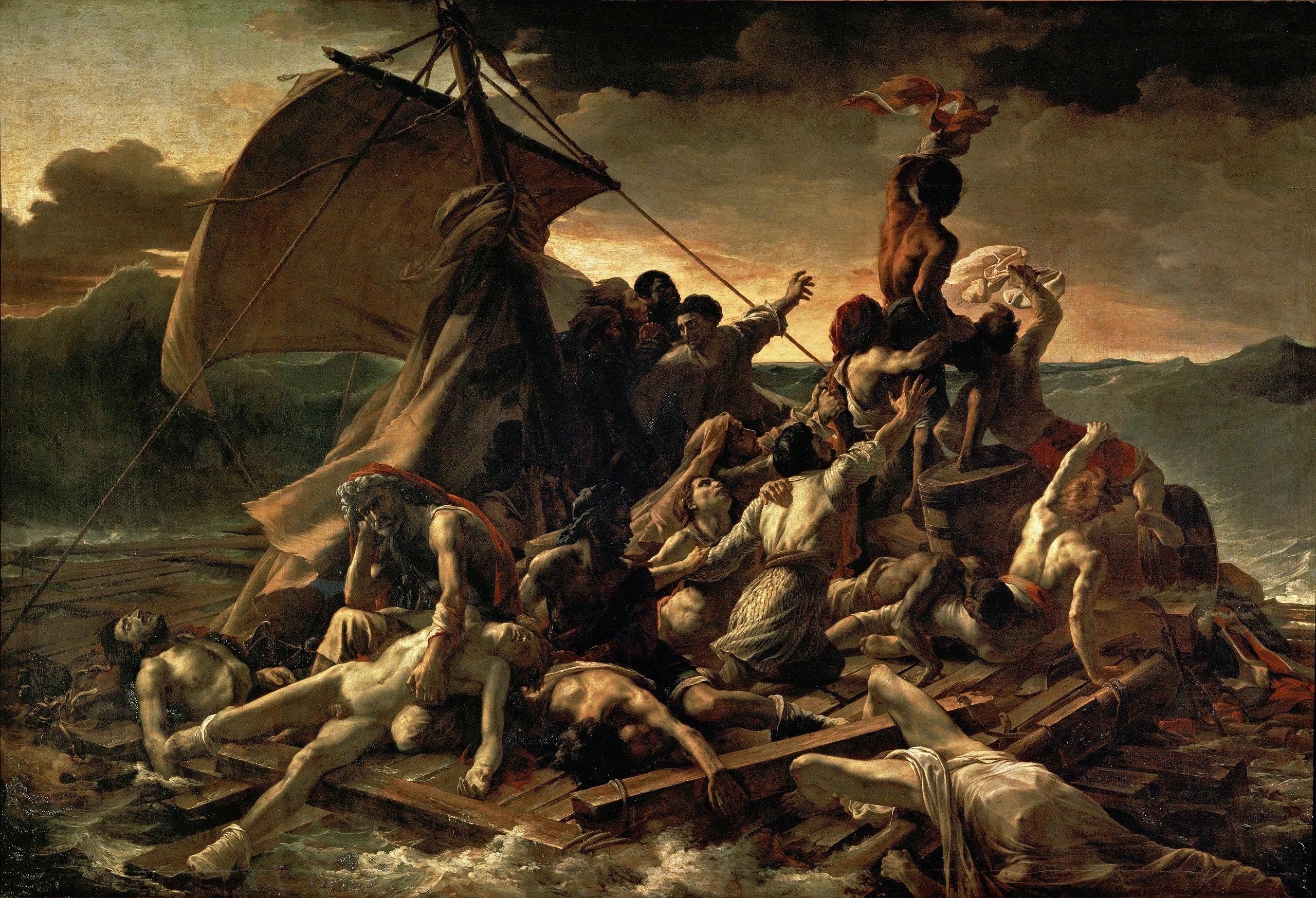
In the painting, we see a depiction of events that took place in 1816 off the coast of Senegal. A royal frigate wrecked, leaving the inexperienced captain out of his depth and without enough lifeboats.
The officers had to construct a raft from the material on the ship and of initially 150 men, only 10 survived the storms and subsequent cannibalism.
Impression, Sunrise - Claude Monet
Painted in the year 1872, Claude Monet's oil painting Impression, Sunrise is famous for being the first painting of the Impressionist movement.
His painting of the port in the French city of Le Havre was done in a style that had never been seen before.
Impressionism was different from other art styles at the time, with paintings usually depicting everyday events but with more vibrant colours.
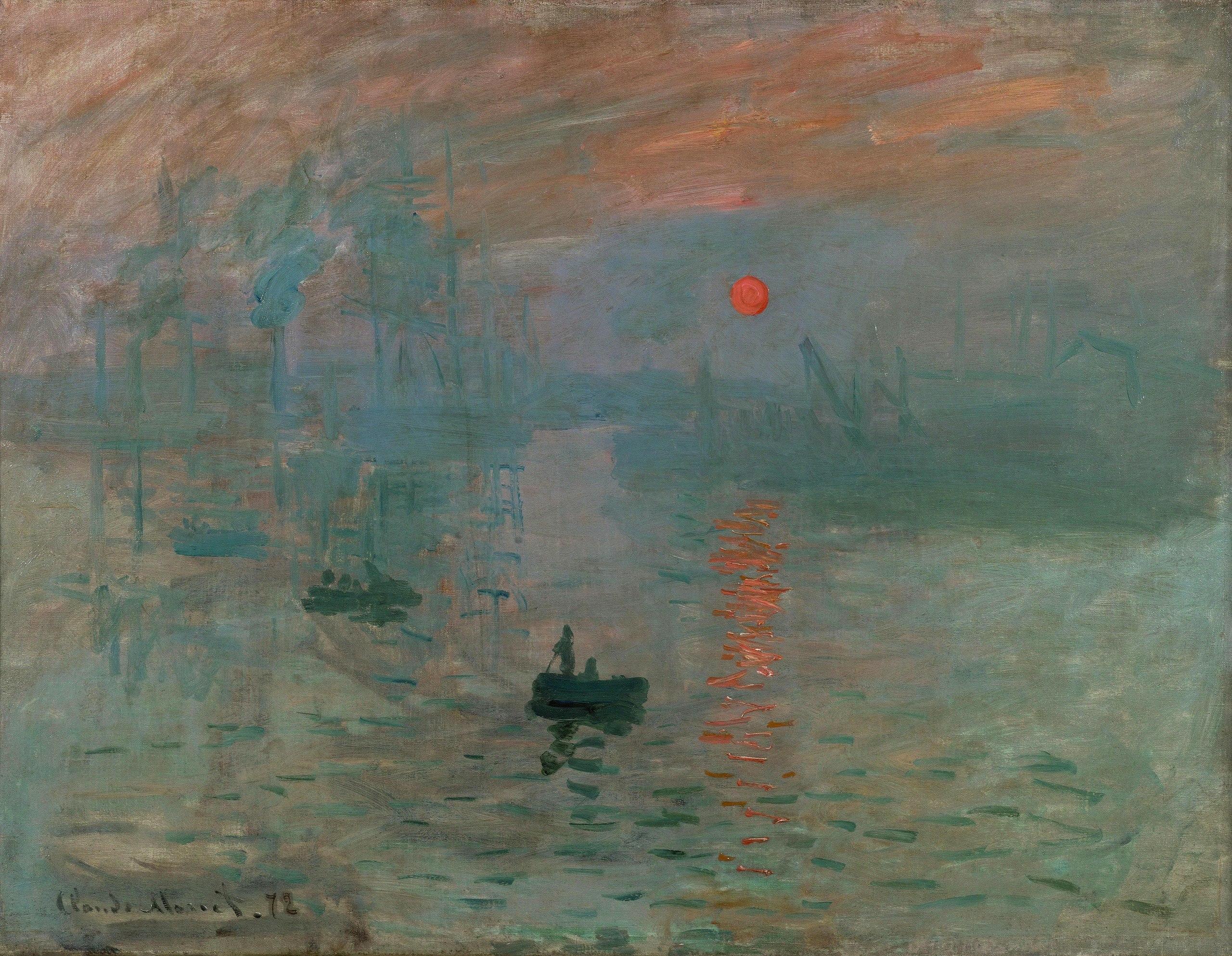
Not everyone enjoyed the new and original style. One critic went so far as to say that Monet had "declared war on beauty", though all this did was make the Impressionists even more motivated. The term Impressionist came from critics mocking Monet's paintings, but if you know anything about the history of art movements, you'll know that this didn't stop the Impressionists.
Le Déjeuner sur l’herbe - Édouard Manet
Luncheon on the Grass (French: Le Déjeuner sur l’herbe) was originally called Le Bain (The Bath). This is an oil painting by Édouard Manet that was initially critiqued but eventually became appreciated, something quite common for many the world's best paintings.
The painting, which features a naked woman with two clothed men shocked people and drew a lot of criticism. The painting broke a lot of rules and played with perspective and lighting.
Many other artists such as Zola, Monet, Tissot, Cézanne, Picasso, Gauguin, and Ernst were inspired by the piece.
Find painting classes in Melbourne here on Superprof.
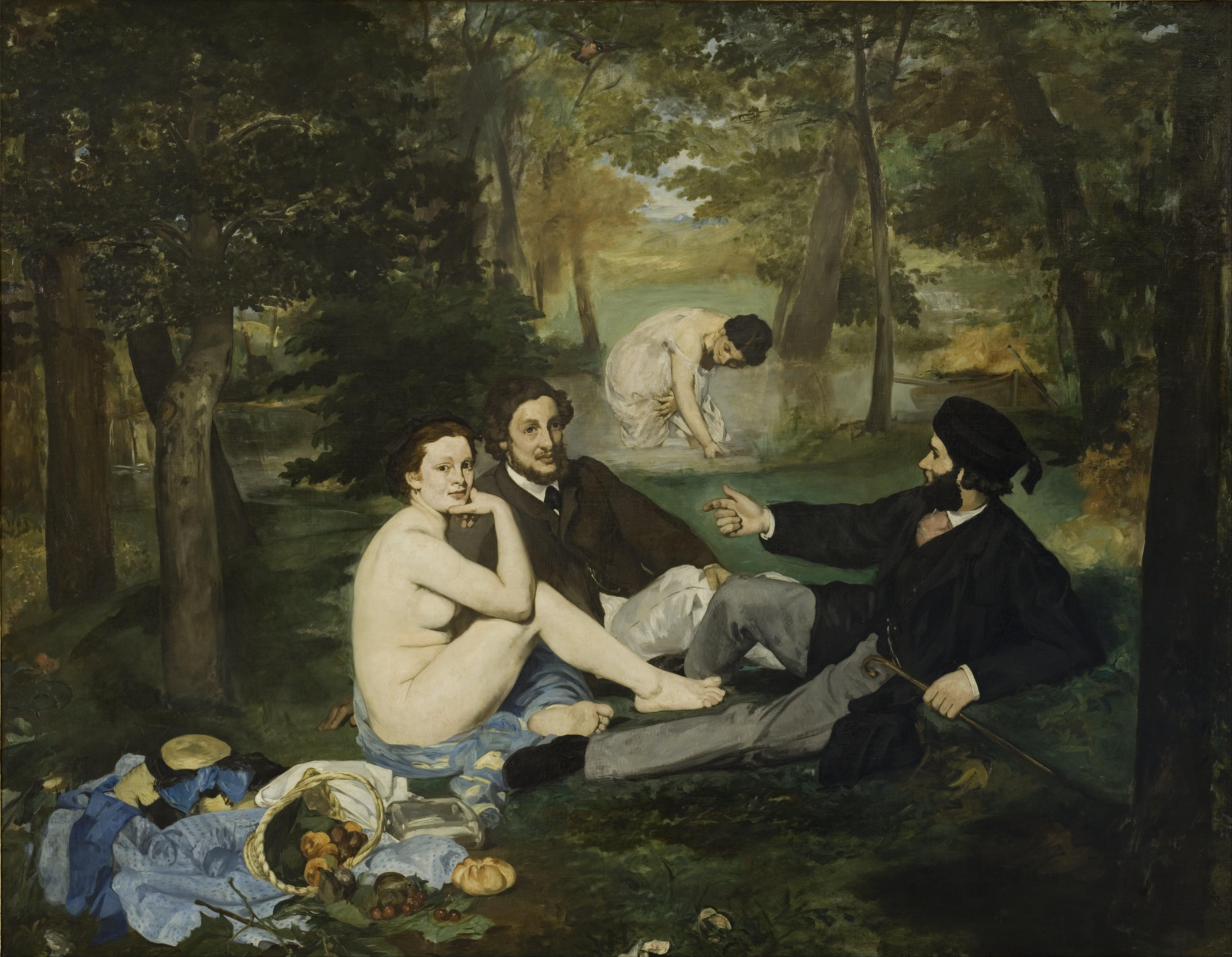
The Great Wave off Kanagawa - Katsushika Hokusai
Not every great work needs to be a painting and this print, which was inspired by impressionism, was made by the Japanese painter Hokusai.
The translations of the Japanese title for the work are either The Great Wave or The Wave. It's from the series "Thirty-six Views of Mount Fuji" and famously uses Prussian blue.

Hokusai's work famously blends Japanese printing with Western influences, which has probably contributed to the piece's fame both in the West and the East.
The work inspired artists like Vincent van Gogh, Claude Monet, Hiroshige, and Kuniyoshi. It's one of the most famous artworks in the world, and admired by many.
The Scream - Edvard Munch
The Scream is an 1893 painting by the Norwegian artist Edvard Munch. Its uniqueness and memorable quality makes it one of the most well known paintings ever.
The painting is an example of early expressionism (not to be confused with impressionism) and depicts a horrified figure on a bridge.
The piece, like many of Munch's works, represents emotions.
In the case of The Scream, the painting takes inspiration from fear and anxiety.
In contemporary popular culture, Munch's The Scream was the basis for the murderer's mask in the movie "Scream".
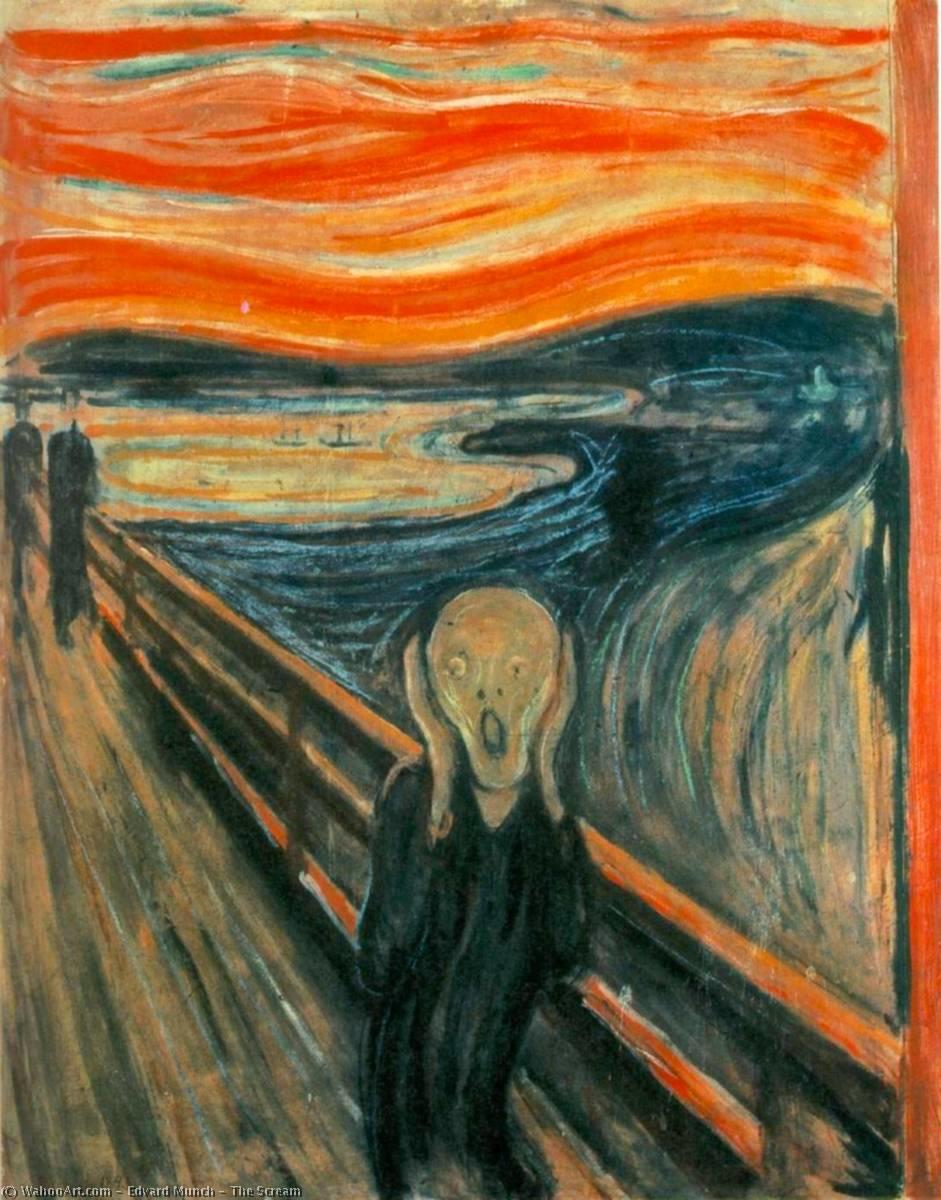
Les Demoiselles d’Avignon - Pablo Picasso
Pablo Picasso's painting Les Demoiselles d'Avignon (The Young Ladies of Avignon) was originally called Le Bordel d'Avignon (The Avignon Brothel).
The oil painting is classed as proto-cubism since it predates cubism and isn't based on anything in the French city of Avignon. The "Avignon" in the title is actually from a street in Barcelona that's named after the French city.
Find spray painting courses here on Superprof.
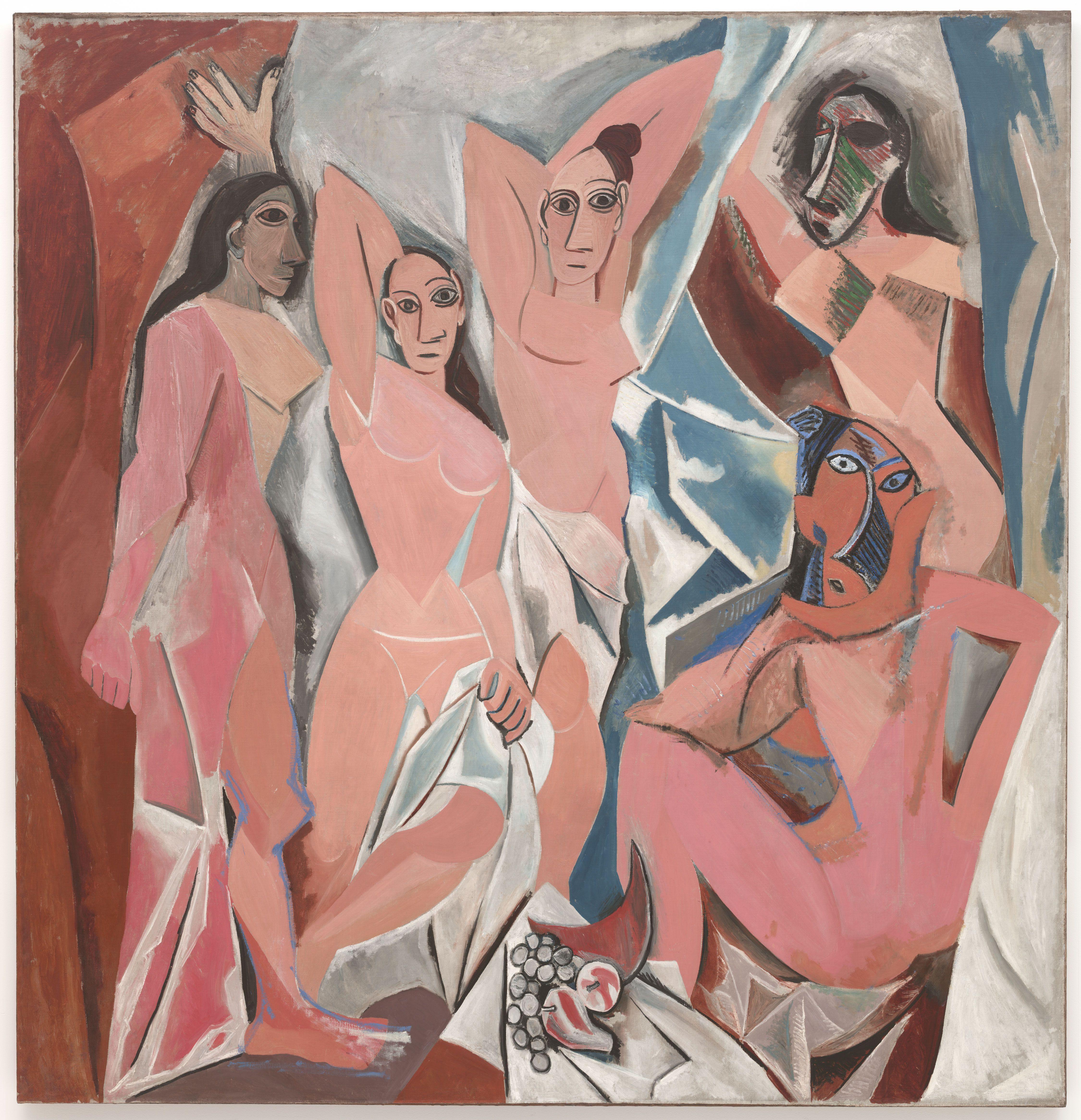
The painting came about after Picasso received a letter from fellow artist Cézanne. Cézanne spoke of the world being made up of squares and circles and the artist subsequently decided to create works through these fundamental geometric shapes.
Even today, the painting is quite visually shocking for how different it is from other paintings. Just imagine how shocking it was for viewers at a time before cubism even existed.
To call the painting scandalous at the time would be an understatement.
That said, artists are always pushing the envelope and looking to try new and daring things in their works. Even the famous artists of today do it.
The Persistence of Memory - Salvador Dali
The Persistence of Memory by the surrealist painter Salvador Dali is arguably the artist's most famous work. Even those who don't know the name of the piece will likely recognise the oil painting with the melting clocks, because it's one of the worlds most famous paintings.
In this painting, you can see the beach of Portlligat with melting clocks strewn around the composition. Dali apparently gained inspiration for the work from seeing some camembert cheese melting towards the end of a meal.

The piece is currently displayed in the Museum of Modern Art in New York City.
Nighthawks - Edward Hopper
Nighthawks is an oil painting by the American artist Edward Hopper. It depicts a downtown diner in a dark city. From a street corner, you can see the diner's interior through its large windows.
The painting is particularly special because it's probably one of the best examples of urban loneliness at the time and uses the medium wonderfully to contrast the darkness of the city with the light from the diner.

It was painted in the year 1942 but still seemingly remains relevant today and not just to those living in American cities.
Self-Portrait with Thorn Necklace and Hummingbird - Frida Kahlo
The Mexican painter Frida Kahlo was famous for her numerous self-portraits and while we could name many of them, we have to mention Self-Portrait with Thorn Necklace and Hummingbird.
Like many of her paintings, this one is autobiographical and symbolic of her personal experiences and her physical and emotional struggle. Her works were often an original take on portrait painting, especially through how she explored identity, gender, and cultural heritage by breaking with the traditions commonly found in this style of painting.
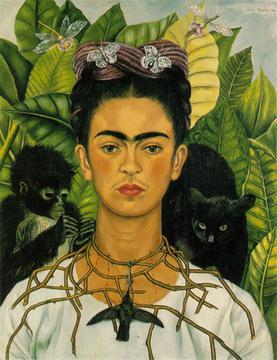

Big Yam Dreaming - Emily Kame Kngwarreye
Here's a fine example of a painter who's original and exceptional in many ways. Emily Kane Kngwarreye was an Aboriginal artist from the Northern Territory who began painting in her 70s!
in a matter of eight years!
With a collection of over 3,000 paintings, she was prolific, especially given that her career only spanned eight years. She averaged one painting a day and her style is best seen through Big Yam Dreaming (1995), which is on display at the National Gallery of Victoria.

Kngwarreye's intricate, interwoven designs convey a wealth of information, even if we don't have the tools to understand what it is.
Femme au bouquet - Baya Mahieddine (Baya)
Baya was an Algerian artist who mostly painted works that could be said to belong to the surrealist, primitive, naïve, or modern art movements. She taught herself art and created both paintings and ceramics.

Her masterpiece Femme au bouquet, painted in 1945, is one of the most famous paintings by women artists in history. Incredibly famous artists recognised her work and talent at the time such as Pablo Picasso and André Breton.
The exhibition called Woman of Algiers celebrates a large body of Baya's work over her lifetime.
Starry Night - Vincent Van Gogh
This iconic masterpiece captures Van Gogh’s emotional turbulence through swirling skies and vibrant blues. Famous for its unique style and expressive brushstrokes, it marked a shift in art history, inspiring modern and post-impressionist artists to explore emotion over realism.
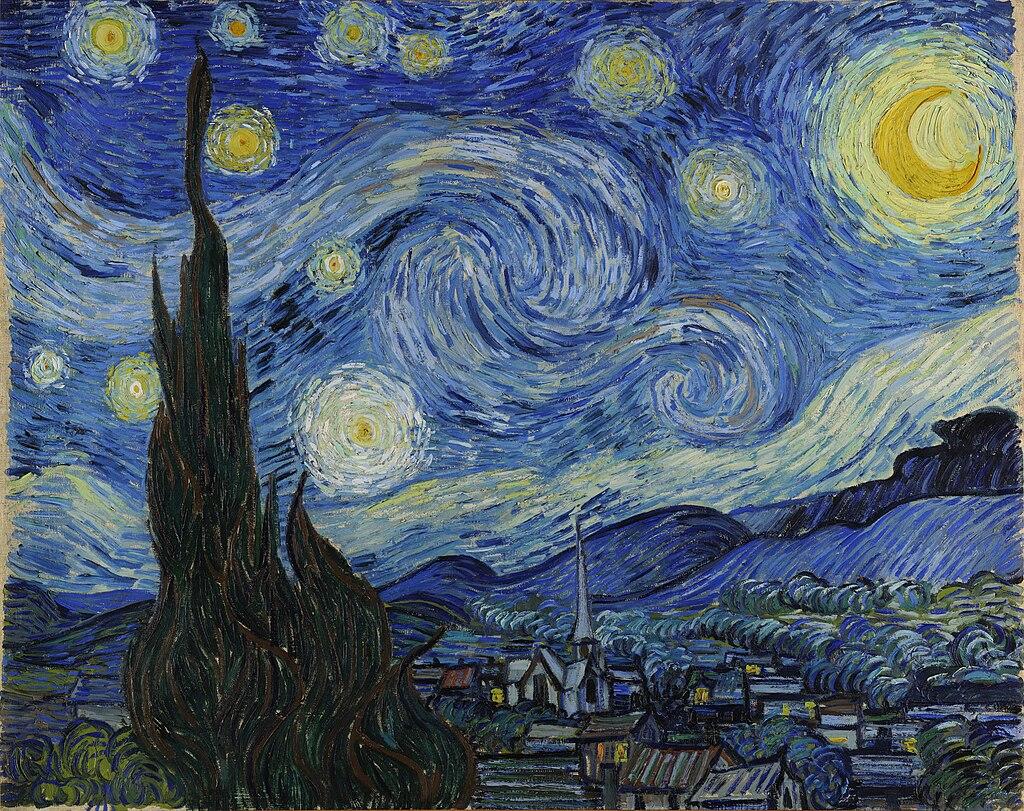
Painted in 1889 during a stay at the asylum, Van Gogh was inspired by the natural world he could see from his window. Many of his paintings show optimism, despite his circumstances and poor mental health throughout his life.
It's considered by many to be among the best paintings of all time.
Birth of Venus - Sandro Botticelli
Celebrated for its ethereal beauty and graceful depiction of Venus, this Renaissance work painted circa 1484–1486 is a cornerstone of Western art. It redefined how mythology was portrayed in art by intertwining humanistic ideals and divine grace.
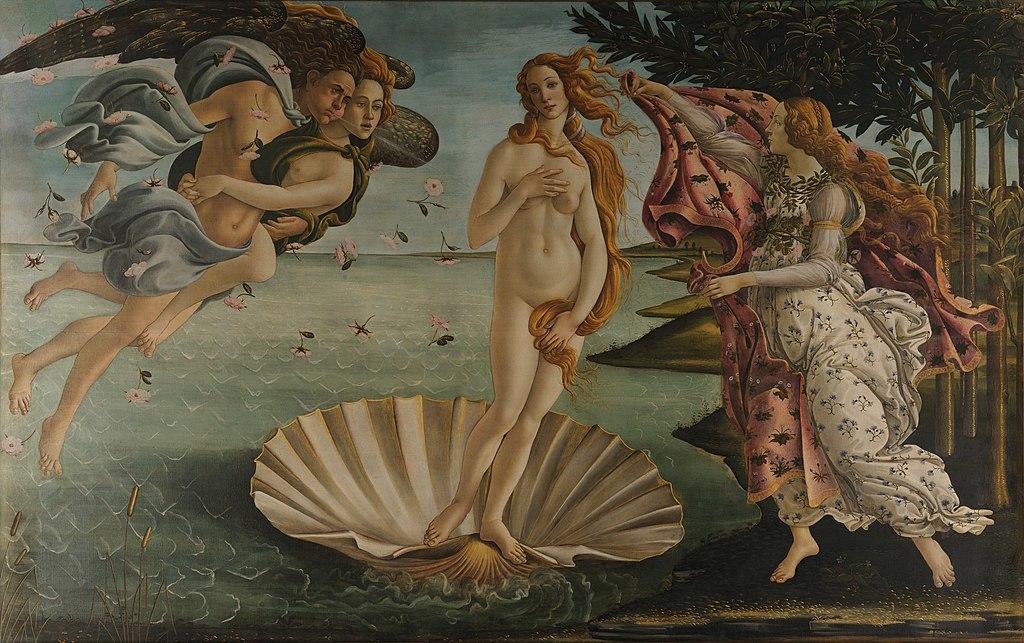
The painting depicts Venus arriving at the shore after her birth. The wind god Zephyrus and a minor deity (probably Aura) blow Venus toward shore, where The Hora of Spring waits to cover her bare form with a cloak.
Ram's Head, White Hollyhock-Hills - Georgia O'Keeffe
This striking painting symbolizes O’Keeffe’s ability to merge the natural with the surreal. The juxtaposition of a ram’s skull and delicate hollyhock reflects themes of life, death, and the vastness of the American Southwest.

O'Keeffe announced a new personal era of freedom and inspiration after a period of personal stress, which caused her to almost abandon art. This painting, from 1935, is a testament to her recommitment to her art and being a modernist painter. The work showcases the elements that had made her successful and fulfilled: landscapes, flora, and skeletals.
Girl with a Pearl Earring - Johannes Vermeer
Often called the "Mona Lisa of the North," this painting is renowned for its enigmatic expression and subtle play of light. The work is a defining example of Dutch Golden Age art, showcasing Vermeer’s mastery of realism. It continues to fascinate audiences with its mystery and timeless beauty.

The style of painting is known as a 'tronie' rather than a portrait, because it depicts a fictitious character with certain characteristics. In this case, it's an exotic-looking young woman with a head covering and a large pearl earring, which would indeed be quite exotic in the Netherlands, especially back in 1665.
A Sunday Afternoon on the Island of La Grande Jatte - Georges Seurat
A Sunday Afternoon on the Island of La Grande Jatte (Un dimanche après-midi à l'Île de la Grande Jatte in French) is the innovative work that introduced pointillism in 1885. Pointillism was a revolutionary technique that used small dots of colour to create a cohesive image.

After studying the science of optics, perception, and colour theory, Seurat used precise dot placement and a vibrant palette to create his masterpiece. The result changed how colour theory and construction in painting were viewed.
Farm Jonkershoek with Twin Peaks Beyond, Stellenbosch- Jacob Hendrik Pierneef
This 1928 painting is a beautiful example of Pierneef’s stylized landscapes, which celebrate the beauty of South African scenery. Inspired by Art Nouveau on a trip to Europe, Pierneef studied the style along with Impressionism, Neo-Impressionism, and Symbolism to revamp his artistic style.
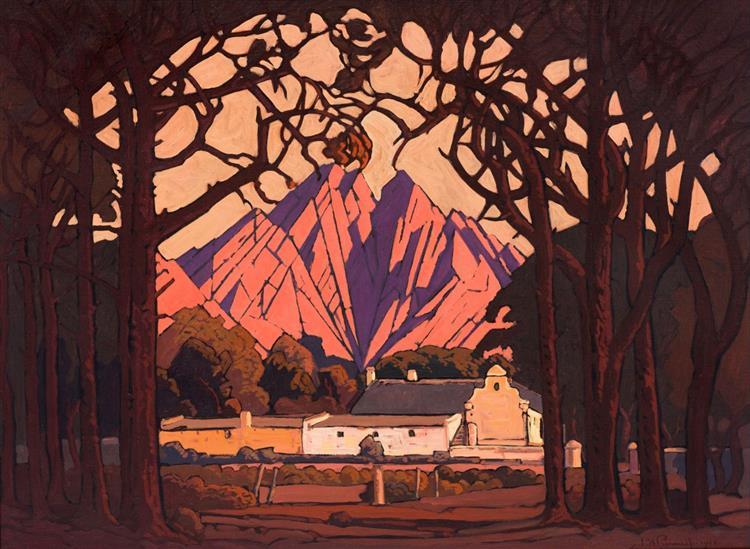
Pierneef refined and perfected his new artistic style, ultimately creating works with masterful mixtures of colour and form. Farm Jonkershoek's clean lines and bold shapes reflect his unique approach to modernism, elevating South African art on the global stage. The work is important for capturing the spirit of the country’s natural heritage.
Spring Frost - Elioth Gruner
This example of late Australian Impressionism from 1919 displays a masterful depiction of light and atmosphere. You can almost feel the crisp, cold, clear air mingling with the warmth of the early morning sun. The almost-silhouettes of the cows and the farmer against the bright sunlight makes the picture seem more lifelike and tangible.
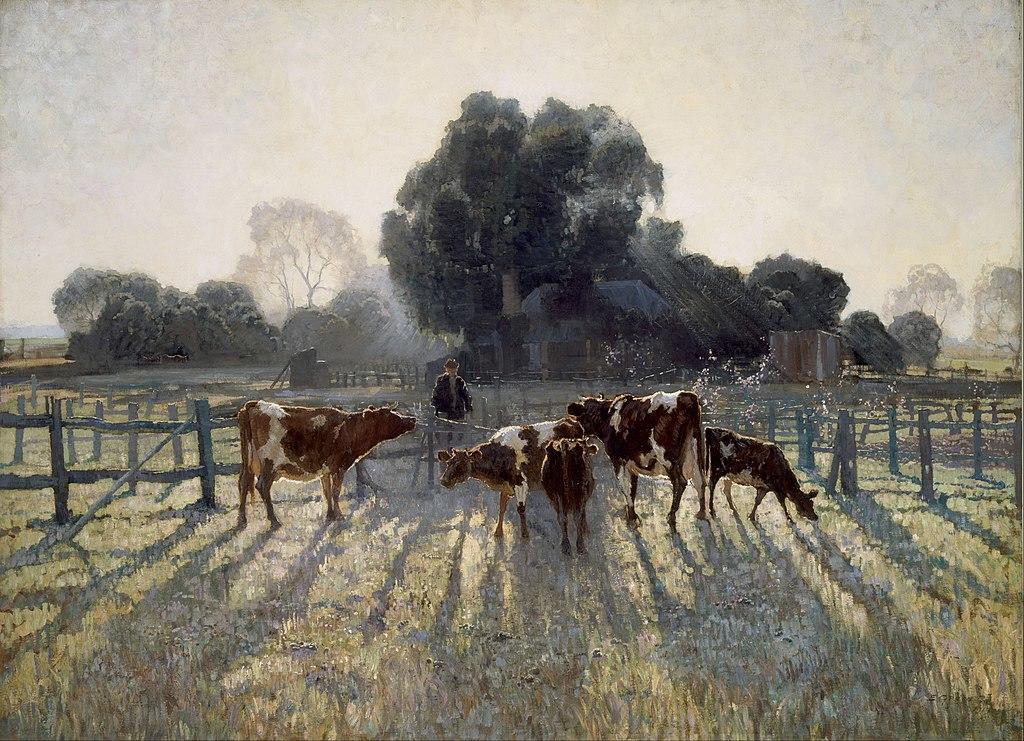
In the tradition of Australian Impressionism, Gruner painted en plein air. He travelled out to a farm in Emu Plains and sat with his canvas in the cow field, where he wrapped his legs in chaff-bags to prevent frostbite. While the finishing touches of the painting may have been completed in the studio, the initial composition was created outdoors.
Shakuntala - Raja Ravi Varma
A masterpiece of Indian art, this painting portrays the mythological heroine Shakuntala with exceptional grace and detail (the painting is also known as Shakuntala looking for Dushyanta).
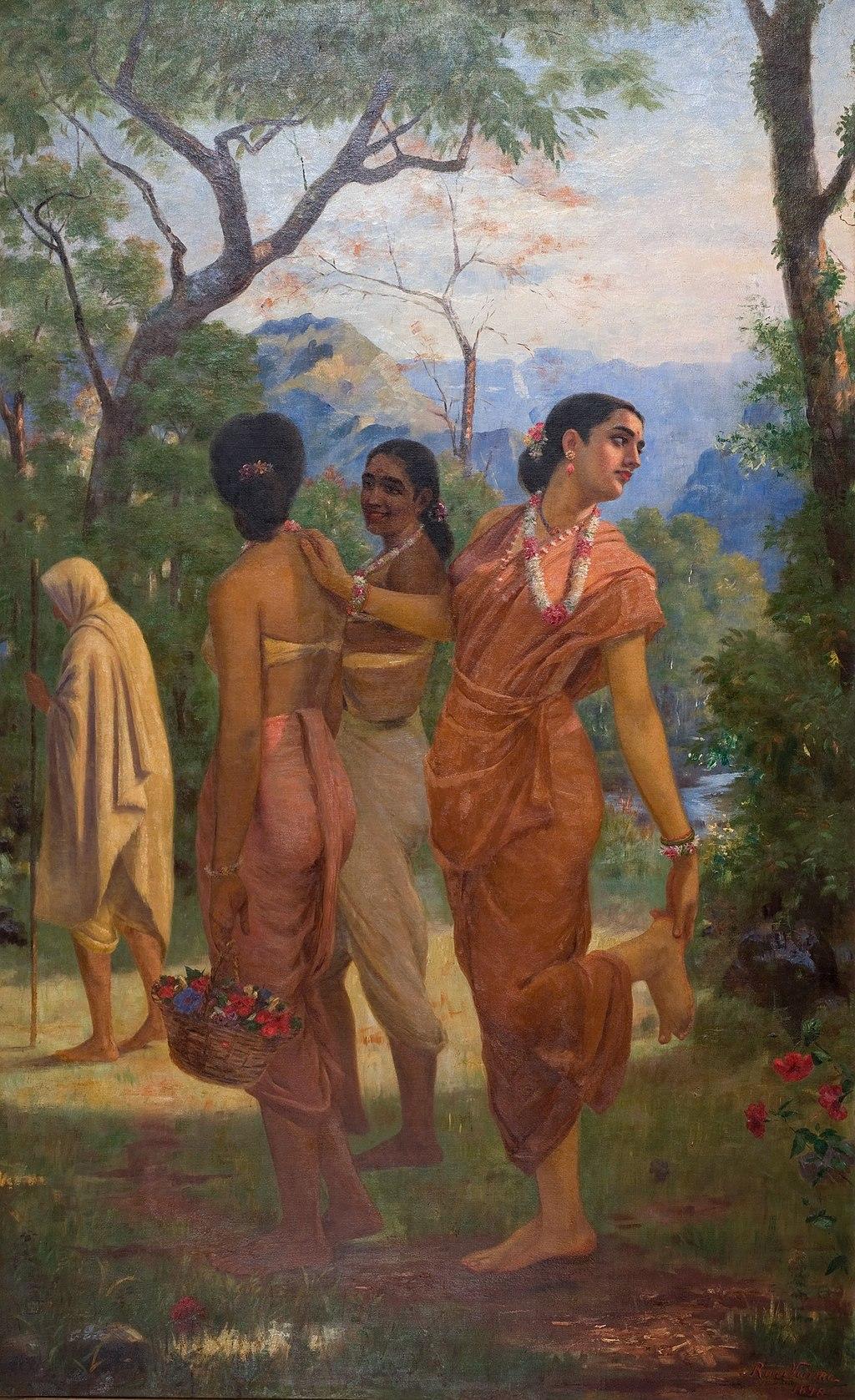
In it, Shakuntala, an important character from the epic known as Mahabharata, turns behind her, pretending to pull a thorn from her foot. In actuality, she is stealing a glance at her lover, Dushyanta, who is positioned out-of-frame.
Shankuntala played a crucial role in blending traditional Indian themes with European academic techniques, creating a new artistic identity. This work by Ravi Varma inspired future generations of Indian artists to explore cultural storytelling.
El Tres de Mayo (The Third of May) - Francisco de Goya
In this painting which was commissioned by the Spanish government, Goya broke from traditional heroic depictions of battle. He instead focused on the plight of the people and the reality of war. Instead of portraying it as a glamorous opportunity for generals to appear courageous and valient, it shows common folks at the mercy of an invading army.
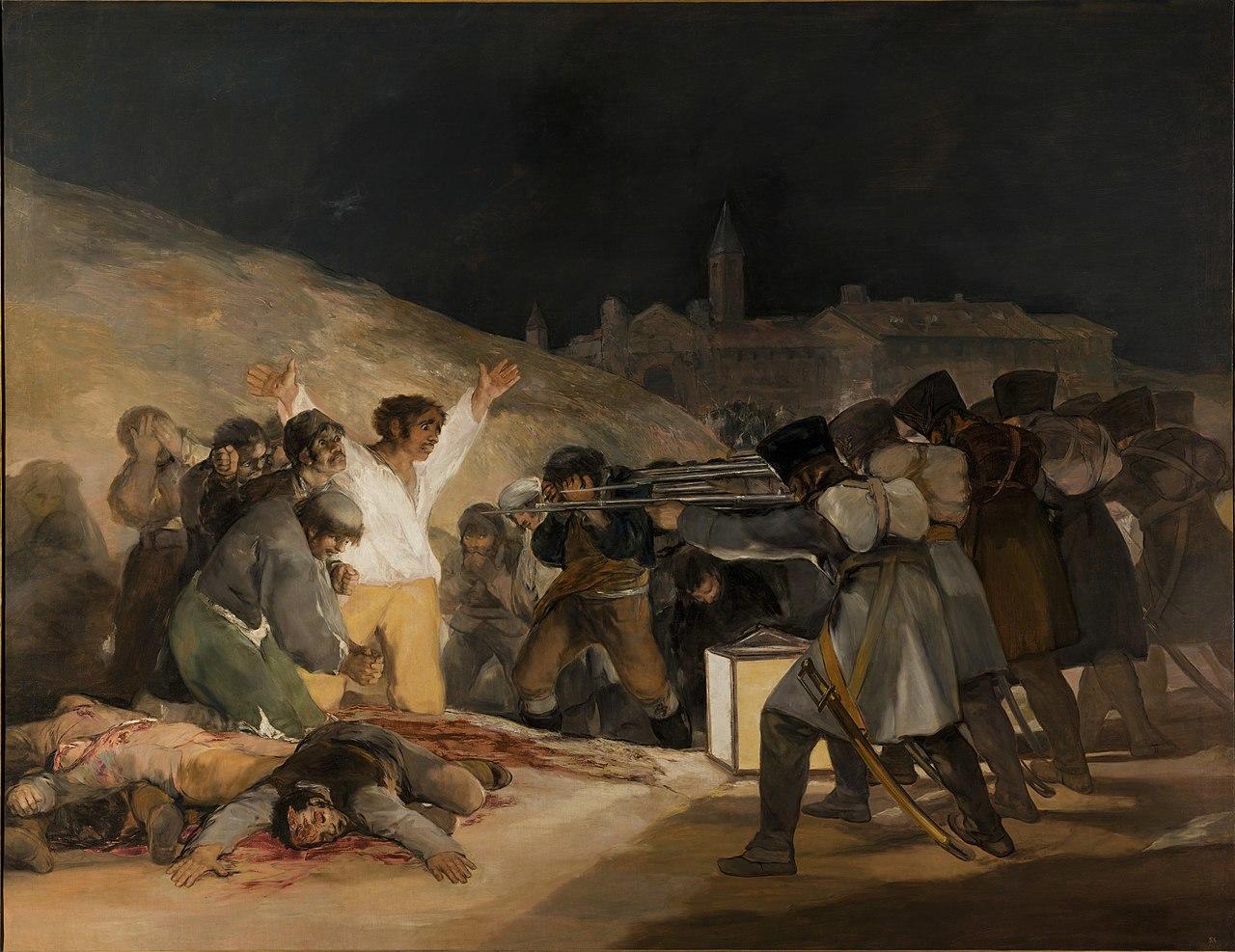
The 1814 painting shows the mercilessness of the Napoleon's soldiers in the Peninsular War of 1808, a reminder of what the people faced and defeated as they resisted and eventually ousted the army. It influenced generations of artists, laying the groundwork for modern protest art.
D'où venons-nous? Que sommes-nous? Où allons-nous? (Where Do We Come From? What Are We? Where Are We Going?) - Paul Gauguin
This profound 1898 work is considered a philosophical achievement, held in a similar regard as the Biblical Gospels because it deals with existential questions. As a child, Gauguini attended Catholic catechism where the Bishop posed the questions: "where does humanity come from?" "where is it going to?", and "how does humanity proceed?"
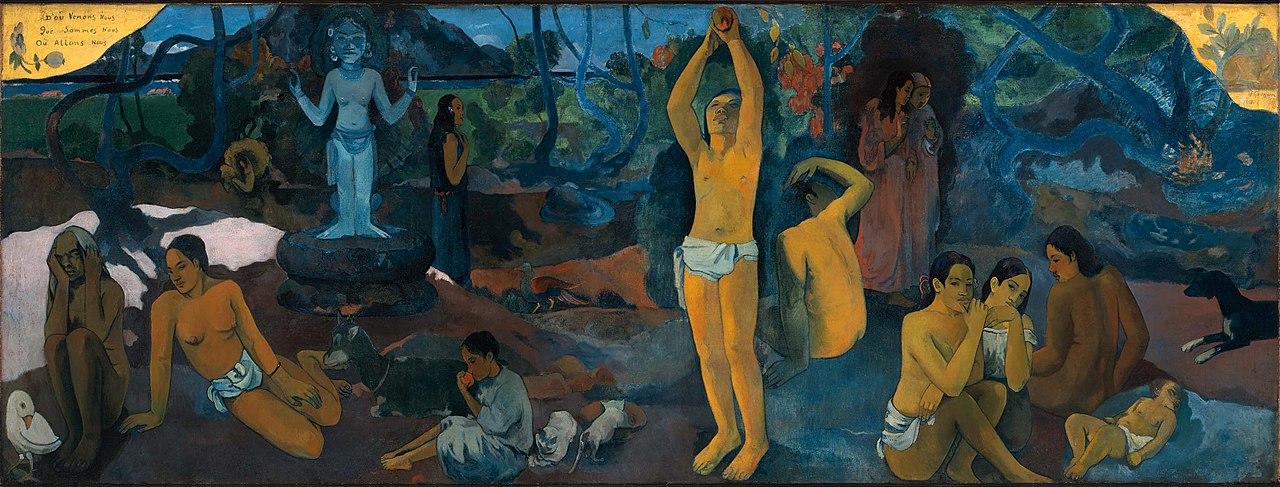
Although Gauguin forsook religion in his adult life and famously left his family to go to Tahiti and ended up divorced from his first wife and "married" an underaged Polynesian girl. Perhaps this painting, with its philosophical questions from his religious childhood, was a way for him to try to reconcile his life as he lived it with how he was raised to believe he should live.
The painting itself tells a complicated story. It seems to suggest that humans are meant for decline and death. According to the art, there is no salvation, as is stipulated in the second half of the Gospel.
The Garden of Earthly Delights - Hieronymus Bosch
Compare this painting to the previous one for a completely different take on life and its meaning!
This fantastical triptych from c. 1490–1510 is famed for its intricate details and surreal imagery. Depicting heaven, earth, and hell, it offers a vivid exploration of human nature and morality. Its imaginative style influenced surrealists like Salvador Dalí and continues to captivate viewers with its otherworldly complexity.
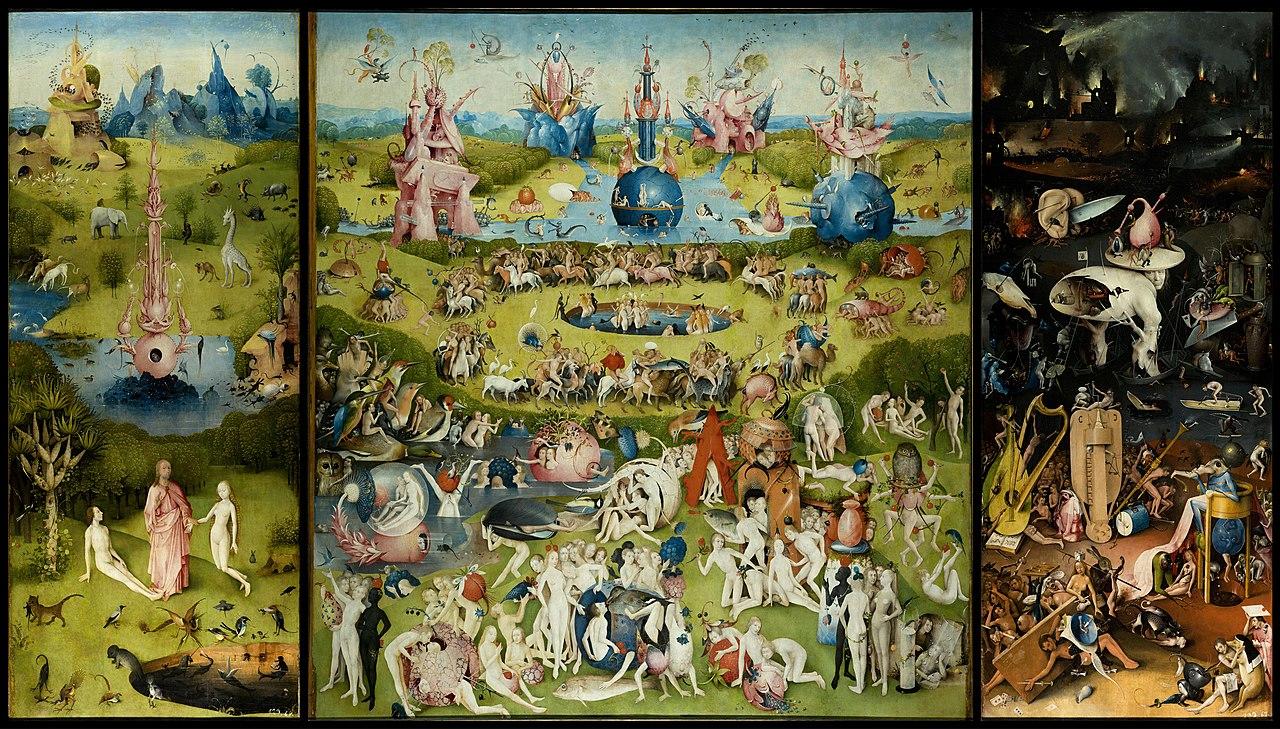
It's theorised that the outer panels depict the Third Day of Creation, when Eden was created. The story of the image appears to be that Eden, Paradise, is shown on the left, with false paradise (the sin of Lust) depicted in the center, and Hell depicted on the right. It warns against accidentally pursuing false virtue, thus damning oneself. In this case, the lovers believe they are embodying the lord's will via Be fruitful and multiply, but in reality they are deceived and actually going against the Word.
If you'd like to make art or dream of seeing something you made on display as part of a collection in a gallery, consider getting help from a private tutor on Superprof.
It doesn't matter whether you're interested in impressionism, cubism, expressionism, renaissance art, or contemporary art, you can find tutors across Australia and all over the world.
Just search for the kind of art you'd like to do and you can start browsing the profiles of many talented and experienced tutors today!
Ready to start painting on your own? Find painting classes Brisbane on Superprof!

